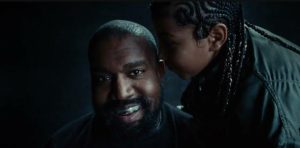CT DMV Recognizing Non-Binary Gender Opens Can Of Worms
February 9, 2020
Connecticut will follow the lead of 12 other states by offering a third gender designation option on drivers’ licenses and ID cards: the non-binary (X). While the new policy has become a way to recognize intersex and non-binary state residents, the additional option is being questioned.
Gender has typically been assigned to one’s biological sex, thus forcing intersex people to choose a binary category: female or male. Selecting a gender has taken place for many throughout their lives, especially on public records and spaces, such as birth certificates, passports and other legal forms.
“We have a responsibility as a state government to be inclusive across our customer experiences,” Governor Ned Lamont said in the press release. “This option on license applications tells all Connecticut residents that we are welcoming and that we are open for business.”
Anastasia Knight, a LGBT Center student worker, said that this addition will provide an option for those who never had one.
“Non-binary is a gender identity that doesn’t exist within the typical gender binary,” she said. “They don’t fit in the middle. They don’t fit in one side or the other. They’re completely outside of it.”
Gia Paulus, an employee at the LGBT Center, explained that non-binary people are not “the third gender,” which is why there is a widespread belief that the addition of another gender option may become more troublesome. By introducing a new gender marker, different concerns may arise, one being the lack of education on the subject.
Knight further stated that education on these topics is mostly related to anti-discrimination. However, if a gender X is added in legal records, Knight recommended that training should be required for people who will be in contact with the gender X and others that will encounter the third option.
“When you get your license, there is the option to be an organ donor and what it encompasses,” Paulus said. “In that same section, they could explain the different gender marker choices and the meanings, so that people could choose the one that they feel more comfortable with.”
Therefore, others offer a different solution to “a much safer option,” which would be to move towards the removal of any indication of gender.
“What is the reason for [the gender marker]?” Nichol McCarter, the University Assistant of the LGBT Center, said. “What does the DMV and state mean when they say gender? What implications could this provoke in regards to our current political climate?”
McCarter said that he hopes that this small change can spark something larger in order to challenge the incorrect understanding about biological sex as a binary system, which in turn will eventually help liberate and protect those who are intersex.
“Gender nonconforming and intersex people are part of a gap that has been underserved in a lot of our bureaucratic processes,” Paulus, an employee at the LGBT Center, said.
Paulus said she believes that creating more options is a good start in the right direction. “The fact that the DMV is starting to recognize them is a very progressive step forward,” she said.
For those interested, the LGBT Center has the necessary forms to apply for the non-binary gender X identification option in their office at the Student Center, located in rooms 304-305.






